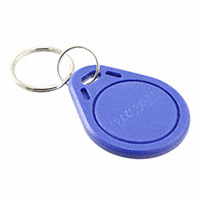
MikroElektronika
MikroElektronika is a renowned company specializing in the development and production of hardware and software tools for the embedded systems industry. Founded in 2001, the company offers a diverse range of products including development boards, compilers, accessory boards, and software libraries. These tools cater to various microcontroller platforms and are designed to simplify the process of developing embedded systems for professionals and enthusiasts alike. MikroElektronika's products are widely used in industries such as automotive, home automation, healthcare, and industrial automation. The company's commitment to quality and innovation has earned it a strong reputation in the embedded systems community. With a focus on user-friendly interfaces and comprehensive documentation, MikroElektronika empowers engineers and developers to bring their ideas to life efficiently. Additionally, the company fosters a vibrant online community where users can share knowledge, collaborate, and access a vast library of code examples and projects. MikroElektronika continues to evolve and adapt to emerging technologies, providing cutting-edge tools and solutions that contribute to the growth and advancement of the embedded systems industry.
RFID Transponders, Tags
Results:
7
Series
Frequency
Style
Standards
Operating Temperature
Technology
Writable Memory
Memory Type
Size / Dimension
Results remaining:7
Applied Filters:
MikroElektronika
About RFID Transponders, Tags
RFID transponder tags are compact devices that integrate both a receiver and a transmitter. These tags are specifically designed to communicate with radio frequency identification (RFID) readers, operating at specific frequencies associated with RFID technology. Here is a detailed description of the characteristics that define RFID transponder tags: 1. Style: RFID transponder tags come in various styles, each suited for different applications. The common styles include: Card: These tags resemble standard plastic cards, making them suitable for applications such as access control or identification cards. Coin: Coin-shaped tags are typically used in applications where a small form factor is required, such as inventory management or asset tracking. Encapsulated: Encapsulated tags are designed to be protected within a durable casing, providing resistance against environmental factors like moisture or physical impact. Glass encapsulated: These tags are encased in glass material, offering enhanced durability and resistance to harsh environments. Inlay: Inlay tags consist of a thin, flexible substrate with an embedded RFID chip and antenna, allowing for easy integration into various objects or surfaces. Key fob: Key fob tags are compact and often attached to keychains, providing a convenient way to carry and use the RFID tag. Nail: Nail tags are designed to be easily embedded into objects like wooden pallets or assets, enabling efficient tracking and management. Wristband: Wristband tags are worn on the wrist like a bracelet and are commonly used in applications such as event access control or healthcare. 2. Technology: RFID transponder tags employ different technologies to enable communication with RFID readers. This can include passive, active, or semi-passive (battery-assisted) technologies, depending on the specific requirements of the application. 3. Frequency: RFID transponder tags operate at specific frequencies that determine their compatibility with RFID readers. Frequencies can range from 100 kHz to 960 MHz, covering various RFID standards and applications. 4. Memory type: RFID transponder tags have onboard memory that stores data related to the tagged object or item. The memory can be categorized as: Read-only: Tags with read-only memory contain pre-programmed data that cannot be modified. Writable: Tags with writable memory allow for data to be written and updated as required, providing flexibility in applications such as inventory management or supply chain tracking. RFID transponder tags serve as the key component in RFID systems, enabling wireless communication with RFID readers. Their specific style, technology, frequency compatibility, memory type, and writability contribute to their versatility and suitability for various applications ranging from access control to asset tracking.







